Introduction: Elevating Virtual Event Engagement in 2025
In today’s marketing landscape, virtual events have shifted from being a pandemic workaround to becoming a strategic pillar. No longer considered optional or secondary, they are now essential for brand engagement, customer education, and lead generation.
According to a report by Entrepreneur, virtual and hybrid events are expected to account for 52% of all events this year, a significant increase from less than 5% before the COVID-19 pandemic. This explosion in usage is no accident. Brands have recognized that webinars, virtual conferences, and digital experiences offer unmatched reach, cost efficiency, and flexibility. They allow companies to speak to global audiences bypassing geographical and logistical barriers that once limited live interactions.
However, as adoption rises, so does competition. Being present in the virtual space is no longer a differentiator—it’s the baseline. Every day, professionals are inundated with invites to virtual roundtables, product demos, and “exclusive” webinars. Standing out requires more than a functional event platform. It requires intention, creativity, and a commitment to delivering real value.
Engagement, in particular, has emerged as the most critical success factor. It's not just about having attendees log in. It's about making them care. Making them stay. Making them participate. The era of static, slide-heavy webinars is fading fast. Modern audiences expect experiences that mirror the energy, interactivity, and connection of in-person events.
What does that look like in practice? It means creating environments where participants can react in real time, ask questions, chat with peers, collaborate with speakers, and feel heard. It’s not enough to speak at people. Marketers must find ways to speak with them. This shift from passive viewership to active participation is reshaping how we define a successful virtual event.
And this isn’t just a creative preference. It’s a strategic necessity. As expectations evolve, so too must the tools and formats we use to reach our audiences. From AI-assisted content repurposing to immersive spatial design, the next generation of virtual events is being shaped by technology—and by people’s desire for real connection in a digital-first world.
For marketers, this means rethinking everything from topic selection to platform capabilities. It means building experiences, not just presentations. Because in a world where everyone’s hosting events, the ones that connect on a human level will be the ones that convert.
In this guide, we’ll explore how to make virtual events more engaging. From the strategies that drive participation to the tools that make it seamless. Whether you’re running your 50th webinar or launching your very first one, the principles remain the same: know your audience, design with intention, and focus on engagement.
Selecting Impactful Webinar Topics to Maximize Engagement
Strategies to Increase Virtual Event Engagement Through Content
Choosing the right topic is the first step to ensuring engagement. Topics should address current challenges, offer solutions, and provide value. One way to do this is by listening to what your audience is already talking about. Visit the communities they’re part of or ask them directly through surveys. By focusing on relevant and timely subjects, you can capture and retain audience interest.
It's essential to understand your audience's needs and tailor your content accordingly. This approach ensures that your webinars are not only informative but also highly engaging to the people watching.
Transforming Passive Viewers into Active Participants
Engagement isn't just about content. It's about interaction. Incorporating polls, Q&A sessions, and interactive elements transforms attendees from passive listeners to active participants, enhancing their overall experience.
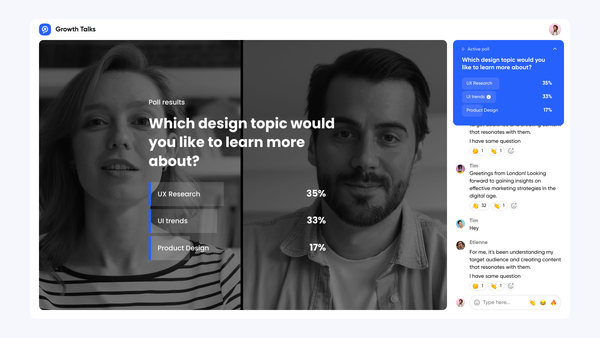
Interactive features encourage attendees to be more involved, which not only makes the event more enjoyable but also helps you learn more about your audience. The more you understand their needs and interests, the easier it becomes to build relationships and ultimately convert them into customers.
Innovative Virtual Event Ideas to Captivate Your Audience
Exploring Unique Formats Beyond Traditional Webinars
Standard webinars can become monotonous. Introducing unique formats like virtual roundtables, fireside chats, or interactive workshops can revitalize your events and keep audiences engaged.
These formats encourage more interaction and provide a fresh perspective, making your events more memorable and impactful.
Implementing Creative Strategies for Virtual Trade Shows and Panels
Virtual trade shows and panels offer opportunities for networking and in-depth discussions. Utilizing breakout rooms, live or pre recorded demos, and interactive exhibits can replicate the dynamic nature of in-person events.
These strategies help in creating a more immersive experience, allowing attendees to engage with content and each other in a meaningful way.
Effective Interactive Features for Large-Scale Virtual Events
For larger audiences, maintaining engagement is challenging. Incorporating live chats, real-time polls, and gamification elements can foster interaction and keep participants invested throughout the event.
These features not only enhance the attendee experience but also provide valuable data for organizers to assess audience engagement.
Creating Immersive Virtual Event Experiences
Utilizing Visual Storytelling and Spatial Branding
Visual elements play a crucial role in immersion. Employing customized virtual backgrounds, branded environments, and storytelling techniques can create a cohesive and engaging experience.
Forbes reports that interactive content, such as virtual reality experiences, generates 52.6% higher engagement rates compared to static content.
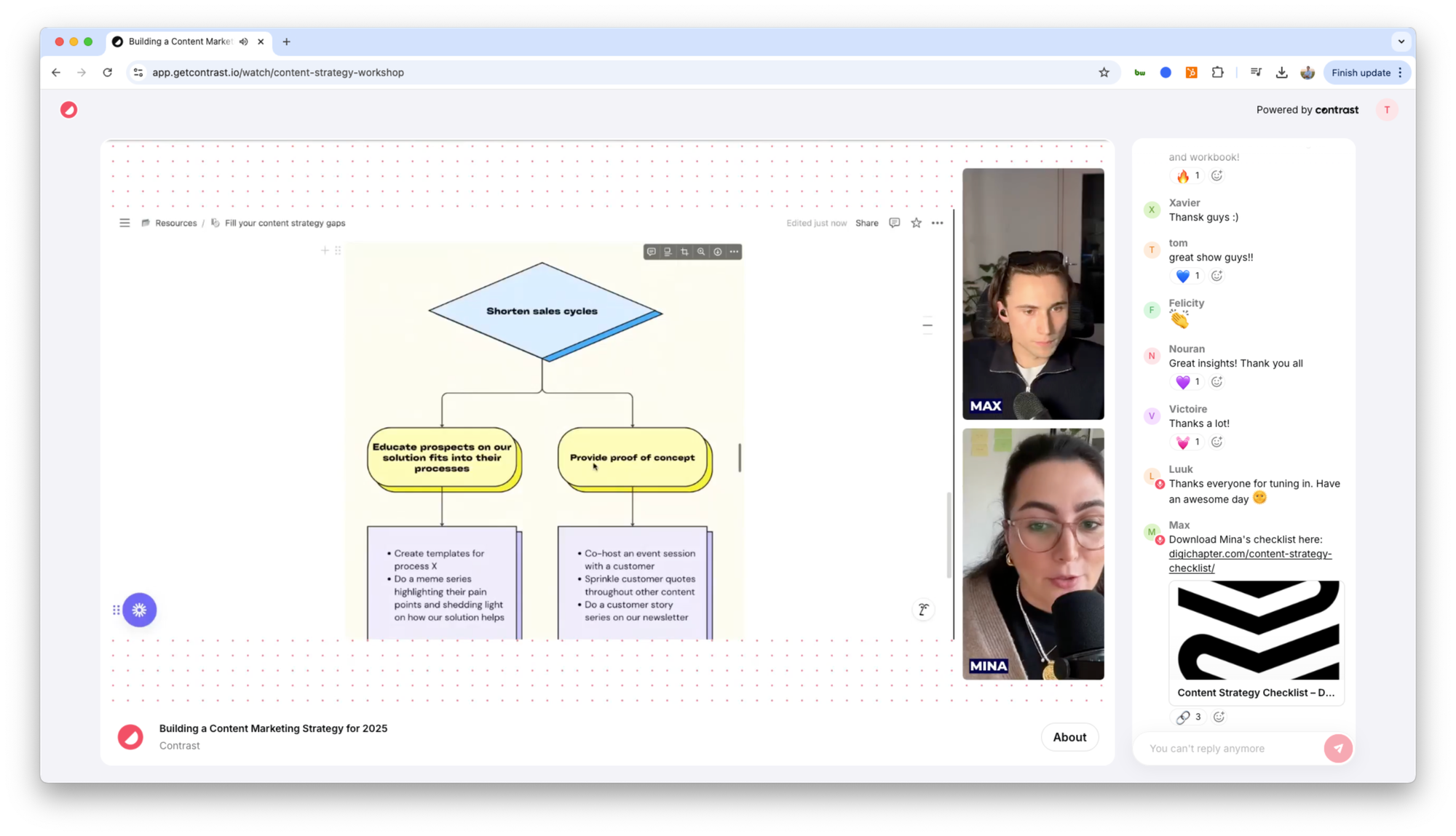
These visual strategies help in reinforcing your brand message and making the event more visually appealing to attendees.
Enhancing Engagement Through Audio Design and Sensory Elements
Audio cues and sensory elements can significantly impact engagement. Incorporating background music, sound effects, and interactive audio components can enrich the virtual environment and captivate attendees.
These elements add depth to the event, making it more immersive and engaging for participants.
Top Tools for Crafting Immersive Virtual Environments
Leveraging platforms that offer 3D environments, interactive features, and customization options can elevate the virtual event experience. These tools make events more engaging and memorable for participants.
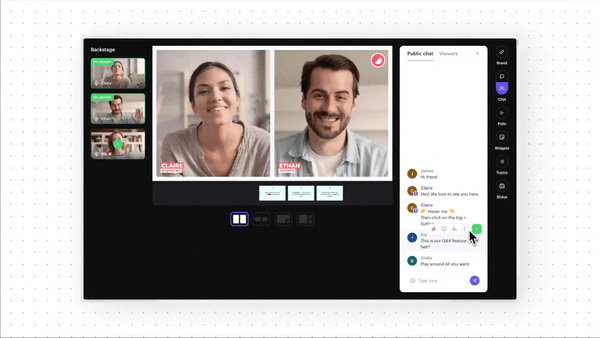
Choosing the right platform is essential for creating a seamless and interactive virtual environment that meets your event goals.
Essential Tools to Boost Virtual Event Engagement
Evaluating Event Management Software and Video Conferencing Platforms
Selecting the right tools is vital. Platforms should offer robust features, user-friendly interfaces, and integration capabilities to ensure seamless event execution and enhanced engagement.
Evaluating different options and understanding their features can help in choosing the best fit for your event management needs.
Leveraging Mobile Event Apps for Enhanced Audience Participation
Mobile apps can extend engagement beyond the main event. Features like push notifications, interactive agendas, and networking opportunities keep attendees connected and involved.
These apps provide a convenient way for participants to stay updated and engaged, enhancing the overall event experience.
Integrating Live Chat, Polls, and Whiteboards Effectively
Interactive tools such as live chats, Q&A, polls, and collaborative whiteboards encourage participation and foster a sense of community among attendees. These tools enhance the overall event experience.
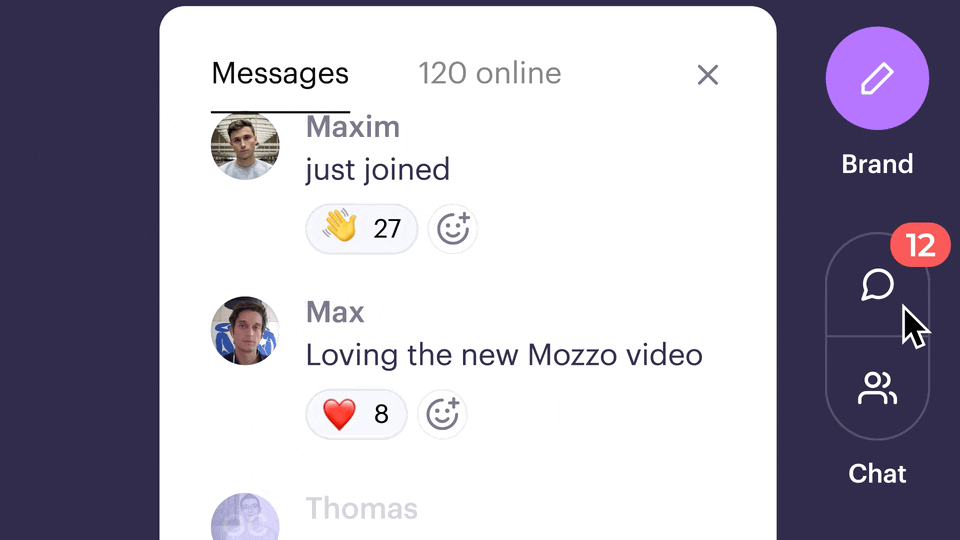
Effective integration of these features can lead to higher engagement levels and more productive interactions during the event.
Comprehensive strategies to enhance audience engagement
Measuring and analyzing audience interaction during webinars
To improve virtual events, you first need to understand how your audience engages. Use analytics to track metrics like participation rates, poll responses, chat activity, and time spent in sessions.
These behavioral insights help you spot what content resonates and what loses attention—allowing you to refine formats and delivery in future sessions.
Implementing real-time participation techniques from start to finish
Audience engagement shouldn’t wait until the Q&A. Start strong with interactive welcome polls or icebreakers and keep participation flowing through quizzes, emoji reactions, or live annotations.
Sustained interaction throughout the event keeps your audience focused and boosts retention of key messages.
Incorporating gamification: quizzes, points, and interactive challenges
Gamification adds a playful twist to any virtual experience. Incorporating point systems, leaderboards, or rewards for participation encourages attendees to stay involved.
Gamified moments can turn passive viewers into active players, creating a more memorable experience that fuels deeper brand engagement.
Effective virtual event strategies for modern marketers
Designing events focused on conversion and engagement
A great virtual event should do more than educate—it should convert. That means aligning every session, demo, or talk with your audience’s position in the funnel.
Strategically placed CTAs and relevant content help guide attendees from awareness to action, supporting both lead generation and sales objectives.
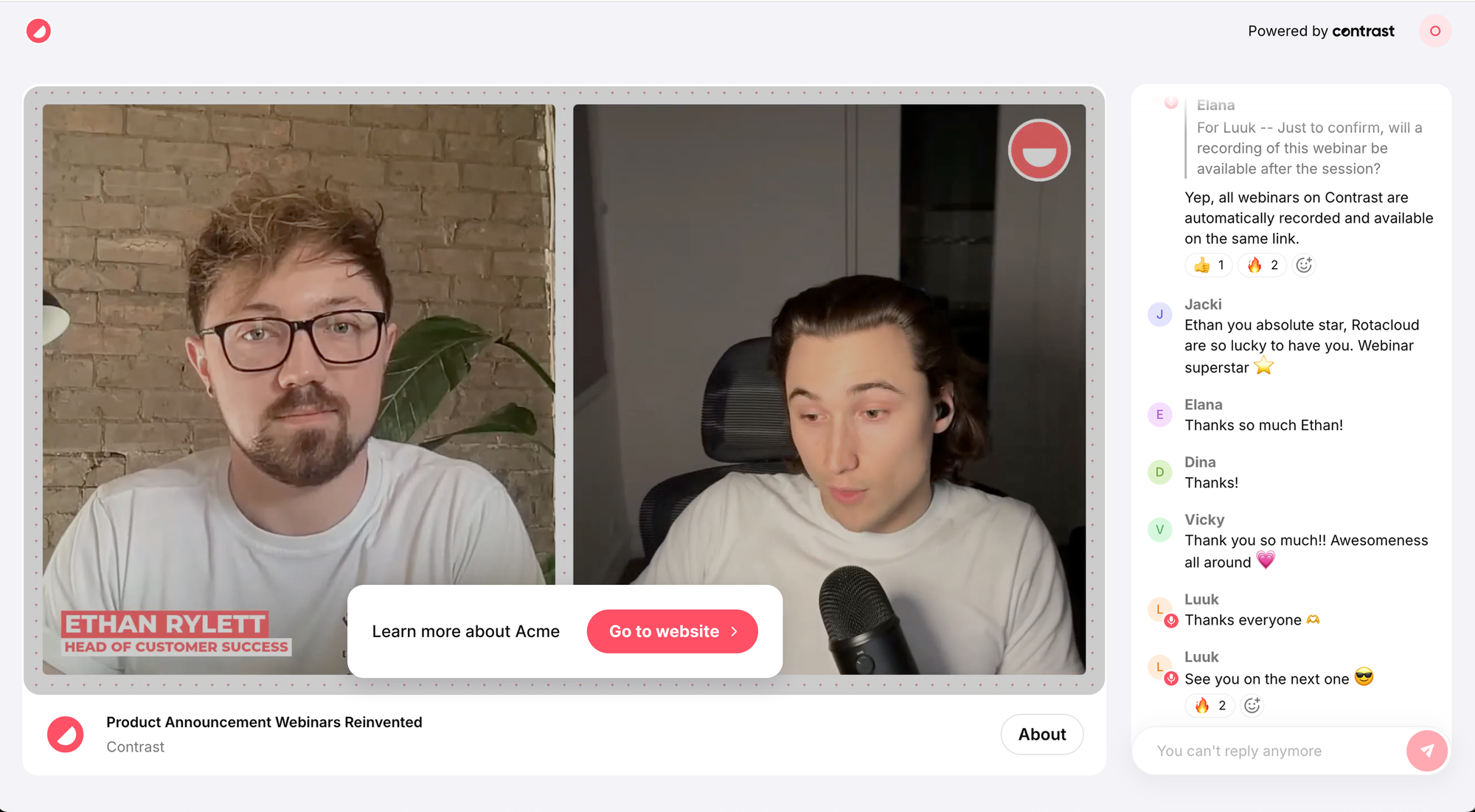
Optimizing scheduling and pacing to maintain attention
Even a perfect agenda can fail if the rhythm’s off. Sessions that run too long or pile up without breaks quickly exhaust attention spans.
According to our study (Contrast), 61% of webinars are 60 minutes long, but only 14% of webinars are 45 min. Picking a non-conventional webinar length like 30, 45 or 90 minutes can increase live attendance rates by up to 5%. Try to fit your hour-long webinar's content into 45 minutes.
Spacing out content with built-in breaks, varied formats, or surprise moments keeps attendees refreshed and ready to absorb more.
Personalizing the audience journey through segmentation
Not all participants are the same. Segmenting your audience by persona, industry, or behavior allows for more relevant messaging, content, and interaction.
Tailoring the experience for each group ensures that attendees feel seen, which dramatically boosts engagement and satisfaction.
Fostering a sense of community in virtual events
Facilitating natural virtual networking opportunities
Networking is a key component of events. Creating spaces for informal interactions, such as virtual lounges or breakout rooms, encourages connections and relationship-building among attendees.
According to Forbes, more than two-thirds of internet users participate in online communities, and 60% are more likely to be loyal to brands that engage with them in such communities
Virtual networking often feels forced—but it doesn’t have to. Try using breakout rooms, speed networking features, or open virtual lounges to encourage casual conversation. For a more modern and flexible approach, consider setting up a Slack or Discord space where attendees can connect before, during, and after the event.
Creating space for human connection adds depth to your event and replicates some of the magic of in-person gatherings.
Creating safe spaces for participant interaction and conversation
Engagement flourishes in environments where people feel respected. Establish clear codes of conduct, moderate discussions, and foster inclusive conversations.
Safe spaces encourage authentic sharing and collaboration, which can lead to more insightful discussions and higher-quality feedback.
Ensuring post-event continuity with follow-up content and communities
The end of the event shouldn't be the end of the relationship. Share recordings, create exclusive content hubs, and invite attendees to join community spaces like Slack or LinkedIn groups. To further extend your reach and maintain engagement, consider repurposing your event content into various formats such as blog posts, short video clips, or social media snippets.
This approach not only reinforces your brand message but also allows you to connect with different audience segments. Tools with AI make this easy, so you can create more content fast without doing everything from scratch.
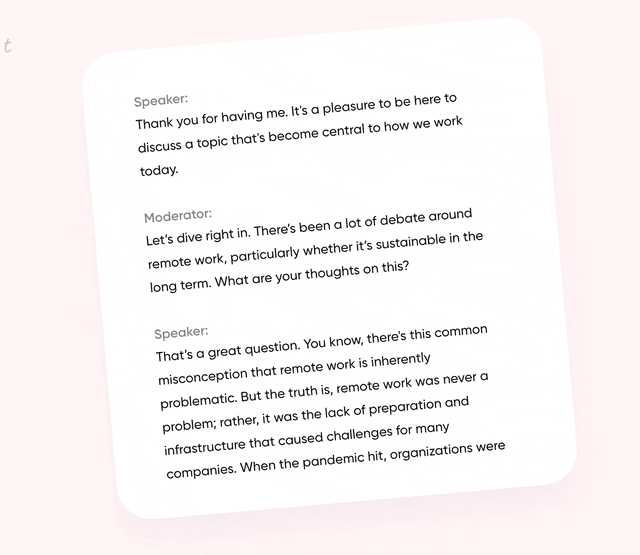
Ongoing engagement builds long-term value, turning one-time participants into loyal advocates or customers.
Engaging attendees from registration to post-event follow-up
Designing an engaging registration process
Your event experience begins at the sign-up form. Make it frictionless, branded, and informative with previews, speaker bios, and session highlights.
A smooth and exciting registration flow increases conversions and sets expectations for a professional, high-quality event.
Utilizing reminders, pre-event content, and onboarding effectively
The days before your event are prime real estate. Use personalized emails, teaser content, or prep guides to build anticipation and ensure attendees show up ready to engage.
Well-executed pre-event communication improves attendance rates, boosts confidence, and reduces early drop-offs.
Key performance indicators to track virtual event engagement
Transitioning from vanity metrics to behavioral insights
It’s time to go beyond views and impressions. Focus on metrics that reflect genuine engagement like watch time, interaction rate, and session participation.
Behavioral KPIs give a more accurate picture of impact, helping you measure what actually moved the needle.
Identifying KPIs that correlate with lead generation and retention
The best KPIs aren’t just about engagement—they connect to business outcomes. Track conversion rates, sales pipeline contribution, and long-term retention.
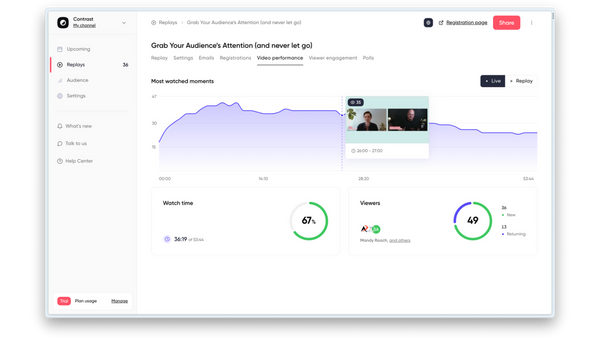
Linking engagement data to revenue outcomes gives you clarity, and proves the real ROI of your event strategy.
Utilizing feedback loops for continuous improvement
Feedback is your best friend. Collect insights through post-event surveys, live feedback tools, and internal team debriefs to inform your next move.
Strong feedback loops ensure every event gets better, creating a cycle of learning, optimizing, and growing your impact.
Avoiding common pitfalls in virtual event engagement
Recognizing when an overloaded agenda diminishes value
It’s tempting to pack your agenda with nonstop content. But more isn’t always better—long schedules lead to fatigue, multitasking, and early exits.
A well-balanced agenda leaves room for reflection and interaction, keeping energy high and content digestible.
Addressing the importance of onboarding and accessibility
Your tech shouldn’t be a barrier. Make sure platforms are accessible, instructions are clear, and onboarding support is ready to help.
Removing friction makes attendees more confident and comfortable, which improves participation from the get-go.
Understanding the risks of inadequate rehearsal and preparation
Tech hiccups and unclear transitions can derail even the best content. Always test your tools, prepare your speakers, and rehearse your run of show.
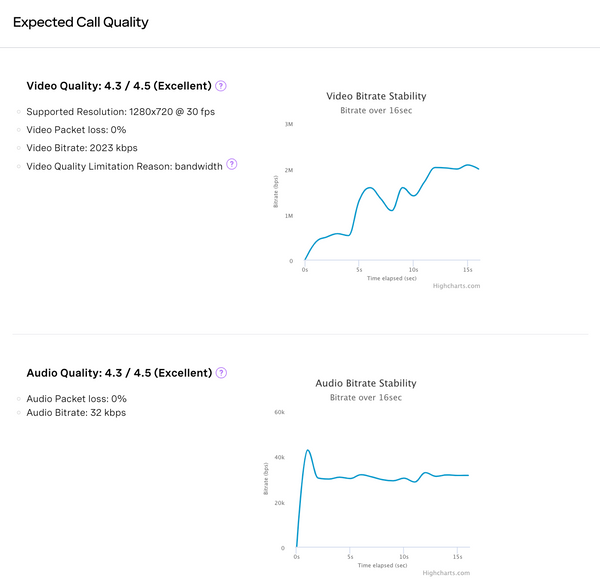
A well-prepared event runs smoother and feels more professional, giving your brand credibility and your audience peace of mind.
Repurposing existing content into engaging virtual formats
Strategies to reuse, remix, and retarget content effectively
You don’t need to start from scratch. Old webinars, blog posts, and whitepapers can become fresh content through new lenses.
Repurposing content saves time and multiplies impact, especially when adapted across formats like videos, emails, or guides.
Adapting single ideas into multiple formats for diverse segments
One idea, many expressions. A webinar can become a highlight reel for socials, a blog post for SEO, and clips for email nurturing.
This multi-format strategy meets your audience where they are, increasing reach without creating new content from scratch.
Transforming FAQs into compelling webinar sessions
Your audience’s top questions are a roadmap. Turn those recurring FAQs into live sessions, deep dives, or panel discussions.
FAQ-driven content feels immediately useful and relatable, helping you build trust and demonstrate thought leadership in real time.
Leveraging cross-platform signals to inspire webinar topics
Analyzing audience preferences across social media platforms
Your audience leaves clues across every channel. Social platforms like LinkedIn and Twitter can reveal trending concerns through post performance, shares, and engagement patterns. Instead of guessing, track what gets traction and let that guide your next webinar topic.
This approach helps you stay relevant and ensures your webinars resonate with real-world curiosity. The more aligned your topic is with what your audience is already discussing, the higher the chances they’ll show up.
Interpreting insights from TikTok, Reddit, and YouTube comments
User discussions are treasure troves. Dive into the comment sections of niche influencers or industry posts. Reddit threads and YouTube reactions often expose unmet needs or misunderstood topics.
These raw, unfiltered insights help you create webinar formats that feel tailored — because they are. Listening to your audience where they already speak unlocks smarter content ideas.
Identifying micro-trends: AI, remote culture, and wellness topics
Trends don’t always start big. Spotting micro-shifts — like interest in mental wellness or the latest AI tools — gives you a head start. Webinars covering these emerging topics position your brand as forward-thinking and responsive.
Keep a running list of micro-trends your audience engages with. These smaller signals often grow into major conversation drivers.
Evaluating the value of your webinar topics for your team
Assessing opportunity costs and targeted outcomes
Every webinar takes time and energy. That’s why it’s crucial to ask whether a topic justifies the effort. Will it generate qualified leads? Support a product launch? Build authority?
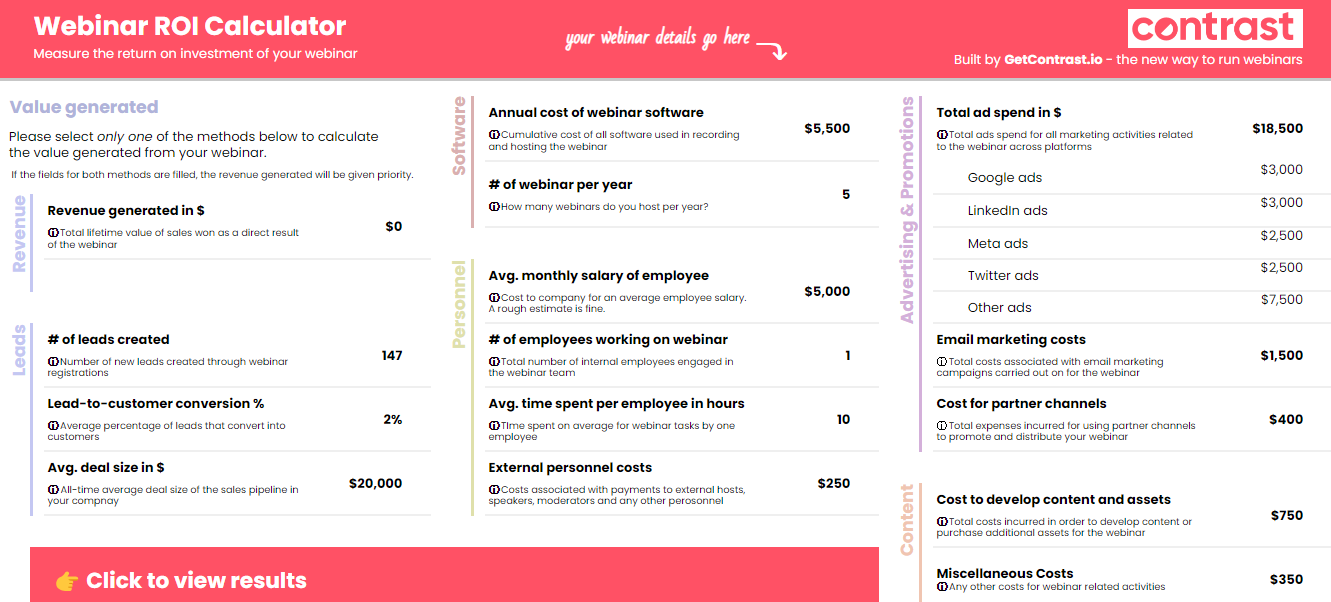
By answering these questions upfront, you align your webinar planning with real business impact.
Aligning topics with marketing strategies and sales goals
Your webinar topics shouldn’t exist in a vacuum. Each one should tie into a bigger strategic priority as an event marketing tool. That might mean supporting lead nurturing campaigns or answering sales objections.
This kind of alignment ensures consistency across your marketing funnel — and makes it easier to measure success.
Implementing A/B testing for topic validation before full launch
Before you go all in, test your assumptions. A/B testing your titles, descriptions, or teaser content on social or via email can reveal what truly hooks your audience.
These small tests help you avoid big flops — and build confidence in your content strategy.
Conclusion
To make virtual events more engaging in 2025, you need more than good intentions — you need great execution. That starts with choosing the right topics, designing immersive formats, and tracking what works.
Above all, success means focusing on what your audience values most. By combining creativity with data, marketers can turn every webinar into a strategic growth opportunity.


